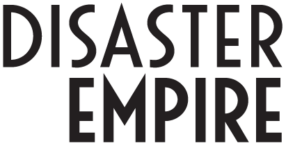
What is Lumiere's Law?
If you’ve clicked on this post, you probably wonder what I mean by unlearning Lumière’s Law. Get ready, folks, because this is another reference to Jeff Shannon’s book, Hard Work Is Not Enough. If you haven’t read it, I discussed it in What Executive Presence Is, The Problem With Multitasking, and 911 Is Not Showing Up. Jeff’s book resonated with me this year. Like any good read, what I learn tends to seep into my everyday.
Maybe I should clarify that I mean non-fiction books. I don’t want situations like in War and Peace or The Prince as part of my everyday. However, this is an example where a book not only has practical applications but inspires me to learn more. Lumière’s Law refers to a cautionary tale of brothers Auguste and Louis Lumière. These early motion picture system inventors abandoned the effort and declared, “The cinema is an invention without any future.” So, this is a warning to keep an open mind and not miss opportunities because you only view something from a limited viewpoint.

Where practitioners get stuck
When something works well or addresses a gap, we tend to replicate it for the long term. The history of business continuity displays this in the development of the field, which was often in reaction to events rather than innovation. For example, in the 1970s, the focus was on business computer systems and the evolution of disaster recovery. It became a needed function because no one wanted a sudden, irreversible data loss.
Then, in the ’80s into the ’90s, the focus evolved from the IT aspect to add in non-technology threats and recovery of business operations. Our beloved Business Impact Analysis (BIA) was born, along with foundational Business Continuity Management (BCM), which sought to support the resumption of operations after interruptions. After the 9/11 Attacks on the US, companies focused heavily on relocating assets due to location loss. Sadly, this legacy became so entrenched that many business people today only equate BCM with facility or personnel relocation.
Bringing this back to Lumière’s Law, we must serve as guides, staying on top of trends and innovating as the world changes. Being stuck behind the eight ball is something we cannot afford. Being overly resistant to change or unable to play chess instead of checkers will not help businesses exceed at risk or resilience.

Good change
None of us believes the world today is the same as pre-COVID. Nor are we the same as before September 11, 2001. So, we must ask ourselves why many of us treat Business Continuity similarly. Incredibly, organizations continue to lead with Disaster Recovery or a technology focus. And yes, it is an essential aspect of Organizational Resilience. However, it’s only one aspect of a synergistic whole. After all, the purpose of tech is to support operational delivery, not the other way around.
The way that Jeff Shannon describes it, you don’t want to give your power away. You want to present yourself and the program with the best advantages to succeed. Continuous improvement is a Lean Management term used to convey the importance of ongoing problem-solving. In Japan, the word is kaizen, roughly translating to good change. Kaizen capitalizes on the Japanese culture’s dissatisfaction with the status quo. The desire to improve things and an appreciation for fine details is an objective all practitioners can strive to embed in their resilience framework.

Let's not be left behind
I don’t have all of the answers as to where we should go. That’s why a practice culture and my network mean so much to me. Although we are in different boats, we are all on the same ocean together. I know that when first introduced to it, business resilience had a harmonious aspect that applied to me. Organizational resilience is one aspect that clarifies the business’ continuum that encompasses assets, strategy, and outcomes.
I, for one, don’t want to be left behind like Auguste and Louis Lumière. They were so entrenched in their notions of still photography that they never envisioned motion pictures (pun intended). It’s a cautionary tale but a meaningful one for all of us. Unlearning what we believe to be true is the first step. Shannon writes, “Accepting new circumstances is the first step to adaptability. It keeps you from clinging to the past or leaping ahead to the future and helps you be fully present and aware of the moment as it’s happening. Acknowledging the discomfort gives you the power to take the next step of unlearning what you believed to be true”.

Unlearing what you believed to be true
The following are my suggestions to get unstuck from old practices that no longer serve you and adopt a growth mindset. Sadly, the Lumière brothers are recognized today as two of the most profound pioneers in the cinema world. Yet, they did not have the vision to look beyond the past and consider the world ahead. Both brothers were brilliant in their field, “Louis focused his interest in stereoscopy, or 3-D imaging, and stereoscopic films throughout the 1930s, while Auguste focused on medical research including studies on tuberculosis and cancer.” Yet, they missed the boat on one of the most defining inventions of the twentieth century–cinema.
A Resilience Zen Master’s list to get unstuck:
- Define Resilience for your org: Determine what aspects of Resilience are most meaningful for your business. I advocate Organizational Resilience (OrgRes ISO), but financial institutions may start by instituting Operational Resilience.
- Look ahead: Institute an ongoing venue to evaluate and forecast risk. Horizon scanning and partnering with Enterprise Risk Management (ERM) and Operational Risk Committees are all recommended practices.
- Look behind: Look at internal and external history to understand how to implement kaizen. Those who do not understand the past are doomed to repeat it. I had a good conversation with Cory Bergman of Factal recently, who shared that a hallmark of the service is that staff consider historical data when reviewing risk. It’s a great idea we all can leverage.
- Learn to be in the now: Remember my blog on The Problem With Multitasking? Being present in the movement and focused on the now feels like a commodity these days. However, it’s necessary to limit distractions to innovate. It also enables us to practice effective listening.
- Deep dive on gap analysis: Going beyond surface data and asking probing questions can help unearth problems not easily identified. We sometimes want to complete tasks and move on, so we don’t take time to contemplate or consider other angles. Use qualitative and quantitative data to help gain a fresh perspective.

Radical advances and measured outcomes
A blog about unlearning Lumière’s Law wasn’t on my list when I sat down to write this week. However, after supporting a response to Hurricane Ian and its lessons learned for Recovery And Resilience, I felt it right to refresh on kaizen. I also felt inspired by my recent conversation with Mark Armour. Although adopting Adaptive BCP might be too revolutionary for all industries, we must shake off practices that don’t suit projected business needs. Indeed, our business partners are not waiting to make changes.
If you want a sense of our CEO’s headspace, read the article Business trends to watch for 2022. Nowhere does it say to stay put or follow the usual course. Instead, we should wisely follow their lead. By nature, I am a practical person. Rarely do I impulsive things. I thoroughly research, investigate, and observe likely tailwinds before making a move. Yet, I am aware that taking some risks in life is beneficial. Overall, I am a propionate of intelligent change.
You could also define it as having a growth mindset. Because that is my lifelong M.O. or typical approach, I recognize that it is easier for me than some to embrace change. However, I hope you agree that business resilience is not a headwind. Instead, it is a beneficial evolution of our business practice to protect, empower, and support organizations through adverse situations.
As always, I invite you to share your thoughts in the comments below.
Did you know?
If you weren’t aware, my blogs contain embedded links to source materials, articles of interest, videos, books, and training I recommend you check out to expand your knowledge base.
